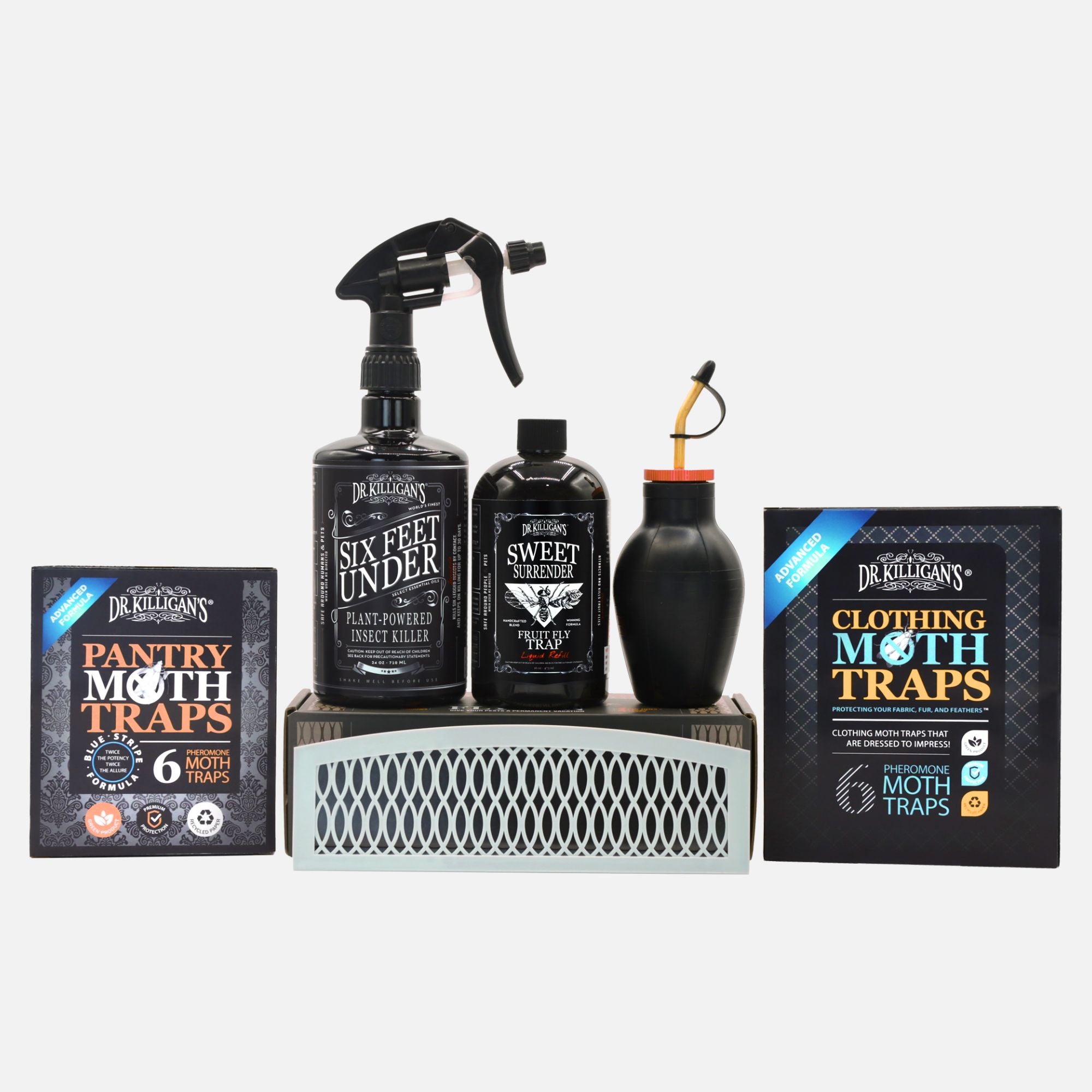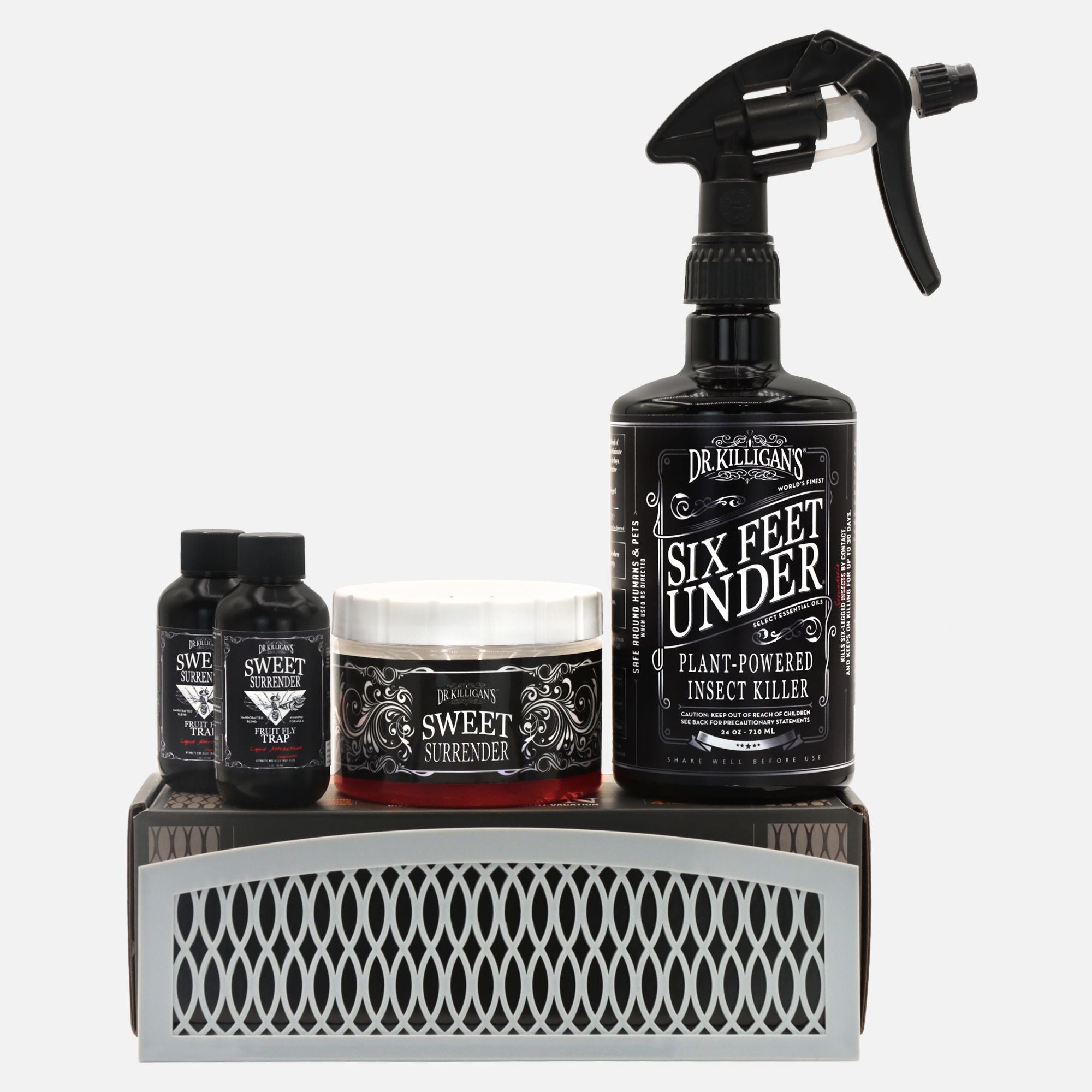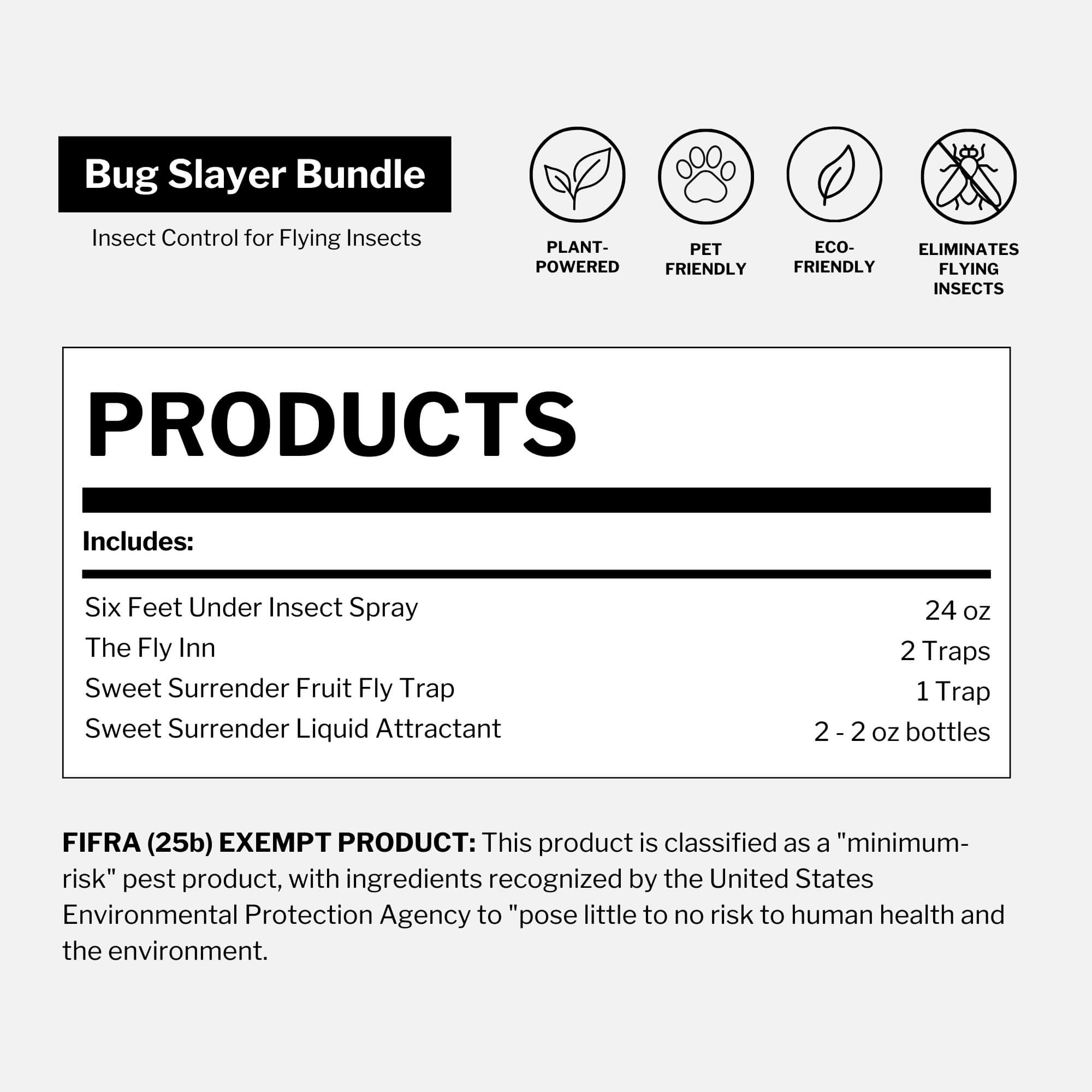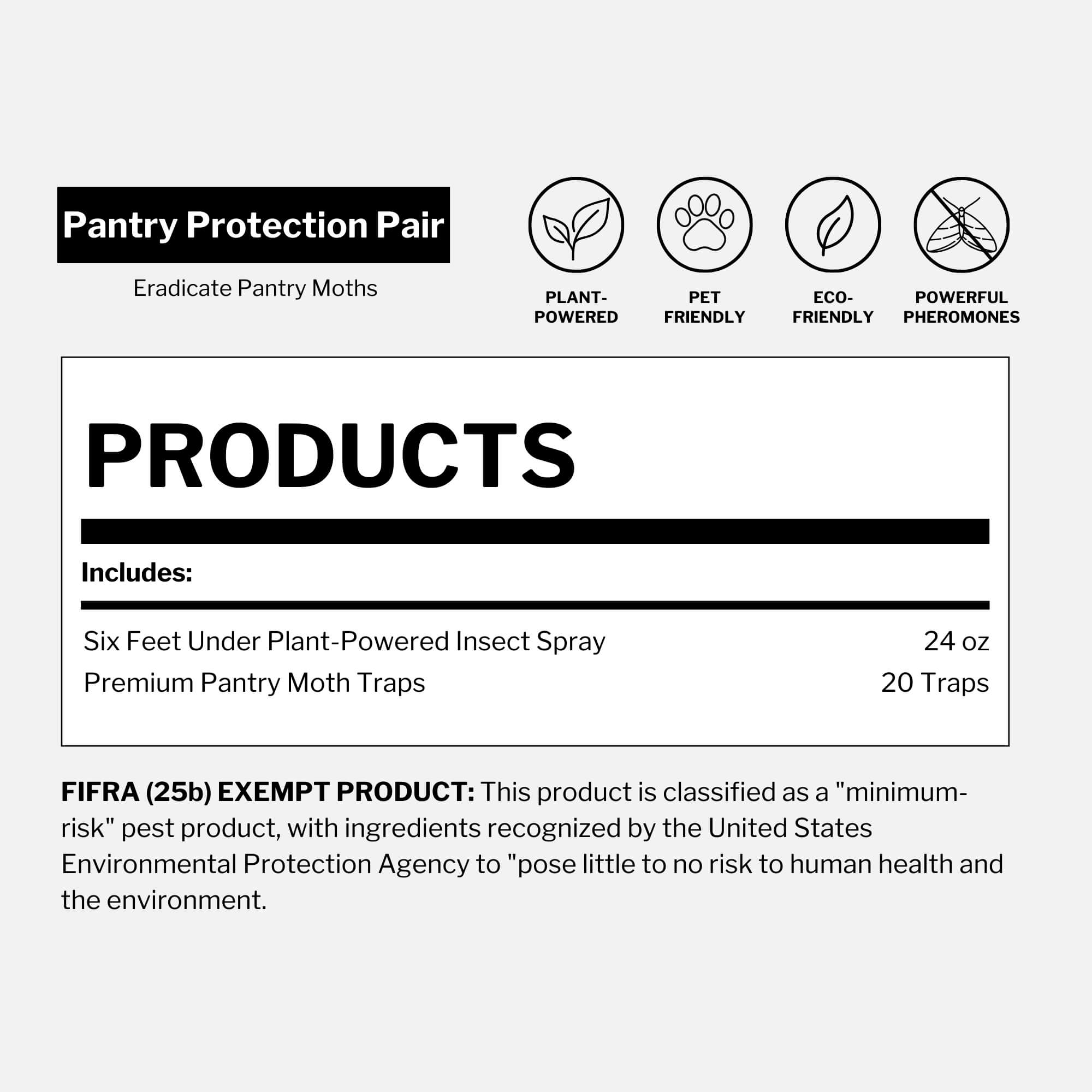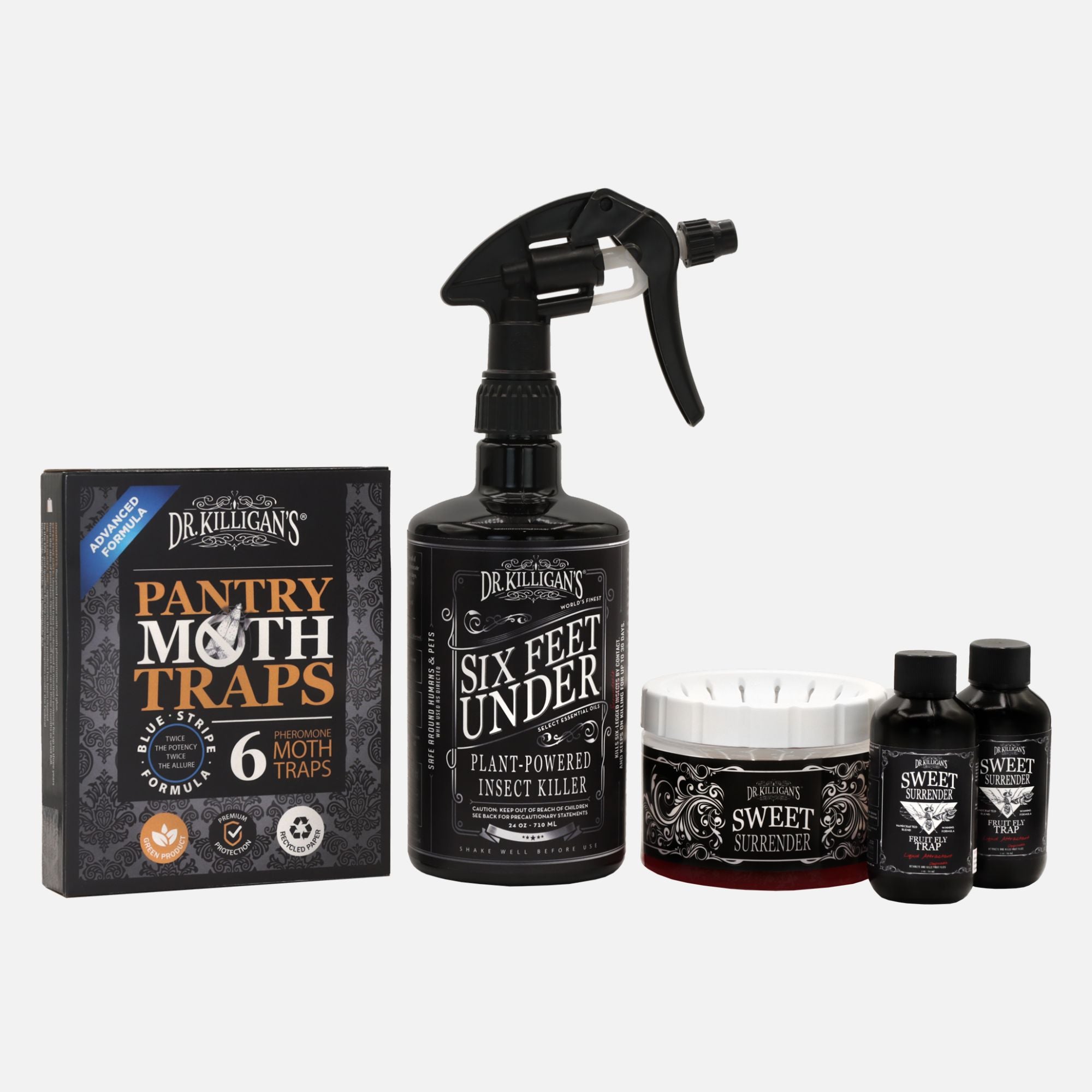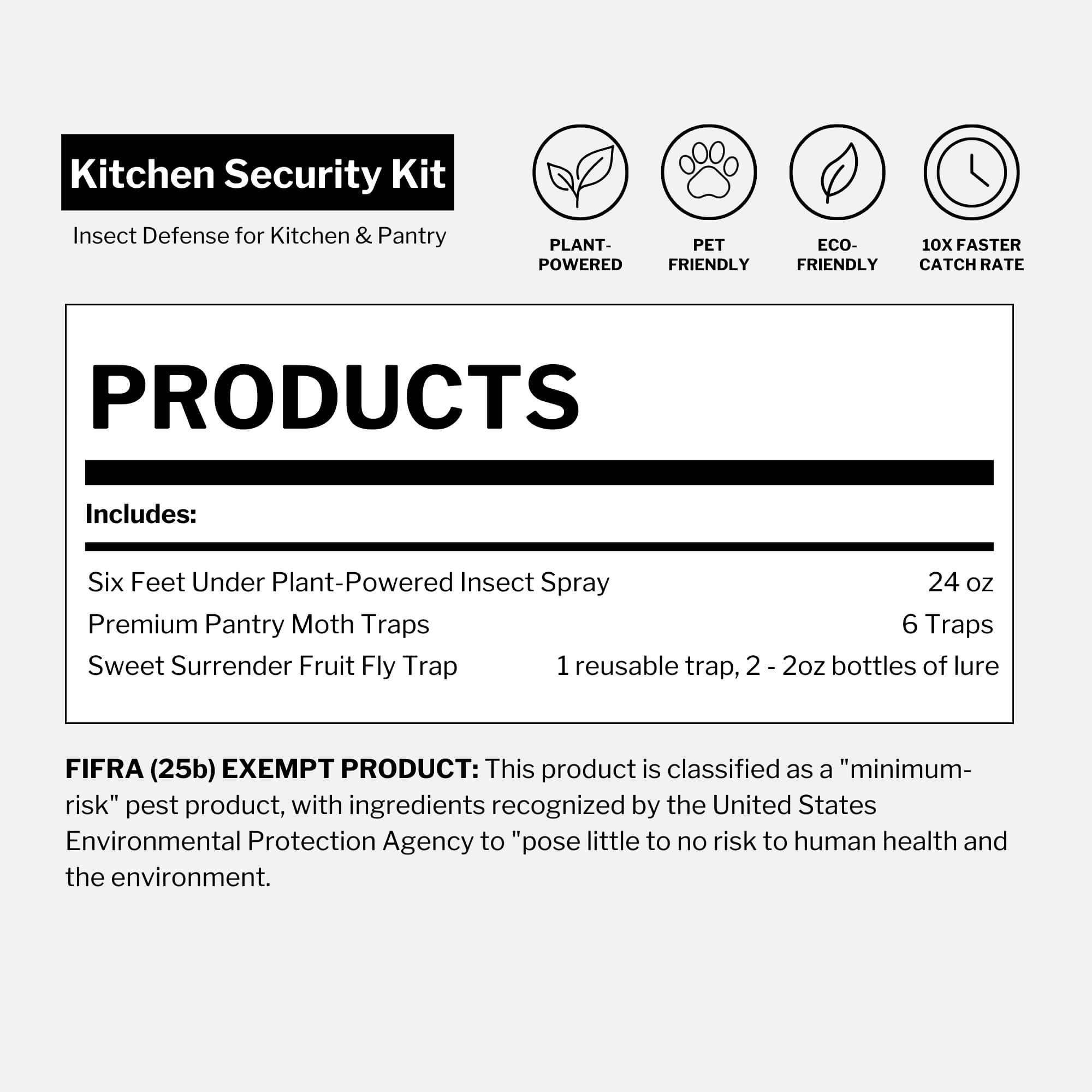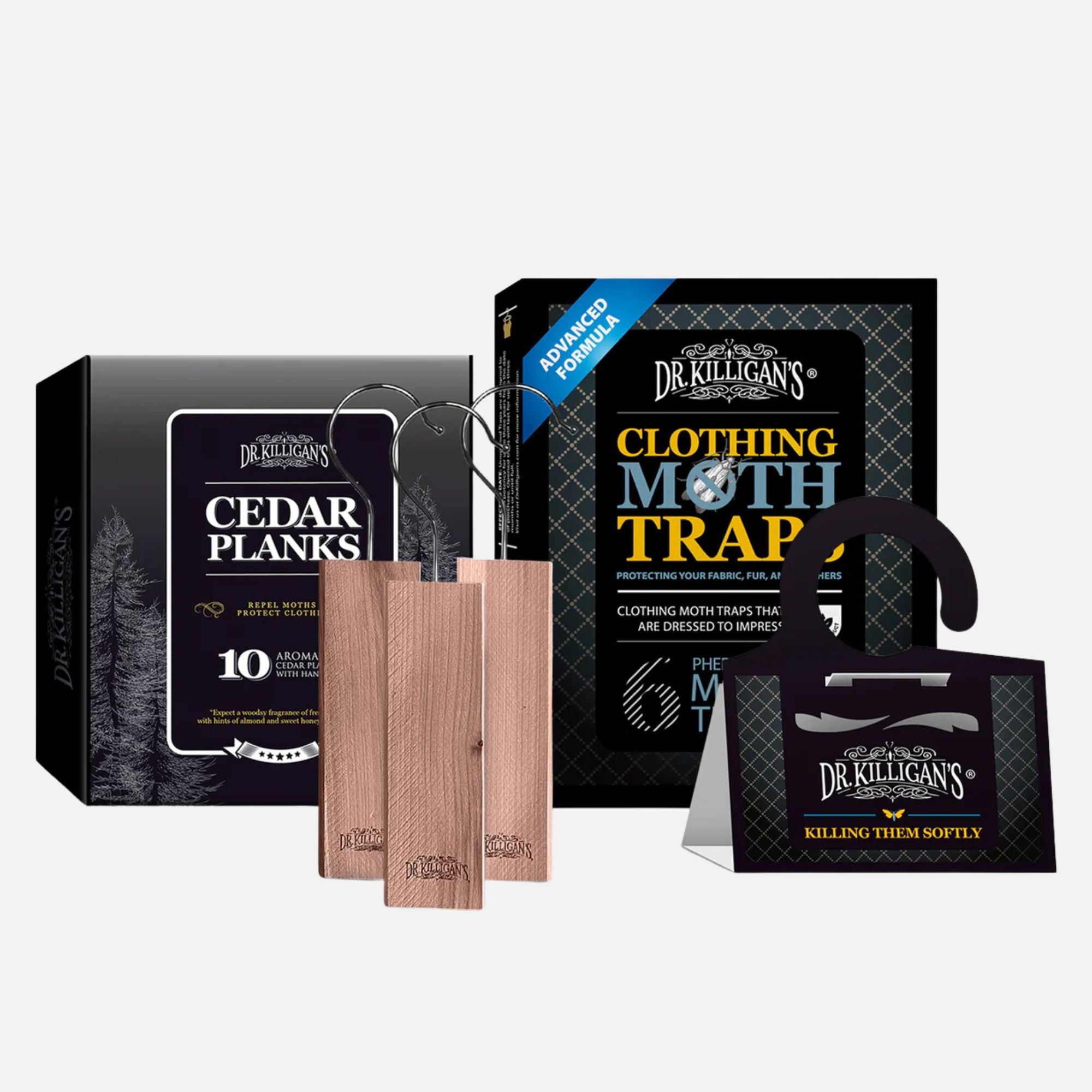Updated on March 20th, 2025
Today we delve into the intriguing world of tiny winged adversaries that often invade our homes—phorid flies and fruit flies. Phorid flies vs fruit flies—two common household pests that often cause confusion—have distinct behaviors and habitats that require different control methods.
Let’s break down these differences and explore effective ways to get rid of them—no harsh chemicals like bleach are needed.
Phorid flies vs fruit flies: How to tell them apart

Phorid flies and fruit flies are both small, nuisance pests, but their habits, appearance and preferred habitats set them apart.
Distinct characteristics: Phorid flies are smaller than fruit flies and have a distinctive humpbacked appearance. Their flight is erratic and short. They are often found in unsanitary environments.
Fruit flies are slightly larger, with a more rounded body and a smooth, hovering flight pattern. As their name suggests, they are attracted to ripening or fermenting fruits and vegetables. If you notice small flies circling your fruit bowl or wine glass, they are likely fruit flies.
Habitat preferences: Both species thrive in damp environments, but their breeding grounds differ.
Phorid flies can infest compost piles, drains, trash bins and even sewage systems. They lay their eggs on decomposing organic material, such as rotting food, sewage buildup and decaying animal matter, making them particularly difficult to eliminate.
Note: This versatility in habitat preference highlights the importance of thorough cleaning and waste management in controlling phorid fly populations.

Fruit flies are highly specialized in their habitat selection. These radiation resistant scoundrels are drawn to ripe, fermenting or rotting fruits and vegetables, where they lay eggs directly on or inside the food source.
Their ideal breeding sites include:
- Fruit bowls with overripe produce
- Garbage disposals with food residue
- Recycling bins with unwashed juice bottles
- Kitchen drains with fermenting organic buildup
The moist, fermenting material in these locations provides the perfect environment for fruit fly larvae to feed, develop and multiply rapidly.
Beyond being household pests, phorid flies have an unexpected role in forensic investigations.
Forensic significance: Phorid flies have a rather macabre claim to fame—they are frequently found in forensic investigations. Their strong attraction to decomposing bodies allows forensic experts to use them to estimate a person's time of death or determine when a burial occurred. This unique role has earned them the eerie nickname "coffin flies."
Quick comparison: Phorid flies vs fruit flies
To help identify which pest is in your home, use this reference guide:
|
Feature |
Phorid flies |
Fruit flies |
|---|---|---|
|
Size & shape |
Smaller, with a distinctive humpbacked appearance |
Slightly larger, rounder body |
|
Flight pattern |
Erratic, short flights |
Smooth, hovering movement |
|
Habitat & breeding grounds |
Decaying organic matter, drains, trash bins and sewage |
Ripe or fermenting fruit, vegetables and damp kitchen areas |
|
Common locations |
Drains, under appliances, compost and dead animals |
Fruit bowls, kitchen counters and garbage disposals |
|
Role in forensics |
Known as “coffin flies” due to their attraction to decomposing bodies |
No forensic significance |
|
Best control method |
Deep cleaning of drains, eliminating decaying organic matter, sealing entry points and using Six Feet Under spray |
Removing overripe fruit, maintaining a clean kitchen and using Sweet Surrender Fruit Fly Trap |
Note: If you determine that your infestation is neither fruit flies nor phorid flies, they may be gnats. Read Fruit flies vs gnats: What’s the difference for further identification.
The battle plan: Effective strategies for control
Phorid flies require a targeted approach to eradicate. Here's a step-by-step guide to help you tackle a phorid fly infestation:
1. Regularly clean drains: Phorid flies will breed in the slimy film that accumulates in drain lines. Use a stiff-bristled brush to physically scrub the inside of the drain. This disrupts and removes the gelatinous biofilm where phorid fly larvae thrive. Repeat weekly.
2. Dispose of decaying organic material: Overripe fruits and vegetables should be consumed, refrigerated or composted promptly. Regularly empty and clean compost bins and garbage cans with hot, soapy water.
3. Use natural cleaning solutions: Opt for natural alternatives. A simple, effective natural cleaner can be made by mixing equal parts of baking soda and vinegar. Pour this solution down the drain, let it sit for an hour and then flush with boiling water. This method cleans and deodorizes the drains without introducing harmful chemicals into your home.
4. Maintain dry conditions: Because phorid flies prefer moist environments, regularly check for and repair any leaky pipes or faucets. Ensure that areas under sinks and other moisture-prone areas are kept dry.

5. Seal entry points: To prevent outdoor phorid flies from entering your home, seal any cracks or gaps around doors, windows and utility pipes.
6. Use Six Feet Under: Dr. Killigan's Six Feet Under Plant-Powered Insect Spray is a powerful non-toxic spray that can be used to combat phorid flies. Six Feet Under uses soybean, clove and cinnamon oils to kill flies by breaking down their exoskeletons.
- Surface application: Apply Six Feet Under on surfaces where phorid flies are frequent. The residual effect of the spray creates a barrier that kills on contact and deters new flies from entering the area.
- Safety and efficacy: The natural composition of Six Feet Under makes it safe for use around your pets and your family, offering an effective solution without the hazards of traditional chemical insecticides.
Fruit fly countermeasures: An in-depth strategy with Sweet Surrender
Fruit flies are rapid breeders, making them a persistent household nuisance. Effective management requires a comprehensive and multi-faceted approach.
1. Eliminate their primary food sources: Store overripe and fermenting fruits and vegetables in the refrigerator.
2. Seal and empty garbage bins containing organic waste frequently.
3. Maintain a regular cleaning regimen: Keep kitchen surfaces, counters and sinks clean and free of food debris.
4. Utilize a vinegar-based cleaner: Use to remove sticky residues that may attract fruit flies, paying special attention to areas under appliances and cabinets where food particles may accumulate unnoticed.
5. Deploy Sweet Surrender: Utilize Dr. Killigan's Sweet Surrender Fruit Fly Trap with Liquid Attractant. This lab-proven, reusable trap is engineered to capture fruit flies effectively, utilizing a proprietary blend of vinegar, sucrose and citrus to mimic natural attractants.

Sweet Surrender is engineered to outperform alternatives, capturing up to three times more fruit flies.
Sweet Surrender's reusable jar is made from recyclable PET and has a lid featuring 32 entrance holes that offer unmatched trapping efficiency. The design reduces odor and evaporation, ensuring long-lasting performance with minimal maintenance.
Debunking common myths: Why not bleach?
Bleach: Bleach is often thought to eliminate phorid flies, but it only kills adults—it doesn’t reach their breeding sites, allowing the problem to persist. Since it fails to remove larvae and their food source, infestations return. In addition, bleach can irritate your skin and eyes, making it a less-than-ideal solution.
Residual pesticides: Residual liquid pesticides may kill adult phorid flies, but they fail to eliminate larvae or remove breeding sources—leading to recurring infestations. Without addressing the root cause, new generations of flies will continue to emerge.

Dr. Killigan's approach: At Dr. Killigan's, our approach transcends the superficial treatment of symptoms. We delve into the root cause of the infestation, targeting the larvae and their breeding grounds. Our commitment to safety is unwavering, as we advocate for methods that pose no harm to humans or the environment.
By focusing on the source of the problem and using environmentally conscious methods, the current infestation is controlled and future occurrences are prevented. Choose Dr. Killigan's for a safer, more sustainable approach to pest control.
Join the Dr. Killigan’s revolution
By understanding phorid flies vs fruit flies, you can take the right steps to get rid of them for good.
Win the battle—without toxic chemicals. With Six Feet Under and Sweet Surrender, you can eliminate these pests effectively using safe, plant-powered solutions.
Shop our eco-friendly pest control solutions today and grab a free cleaning checklist to keep your home pest-free—naturally.



